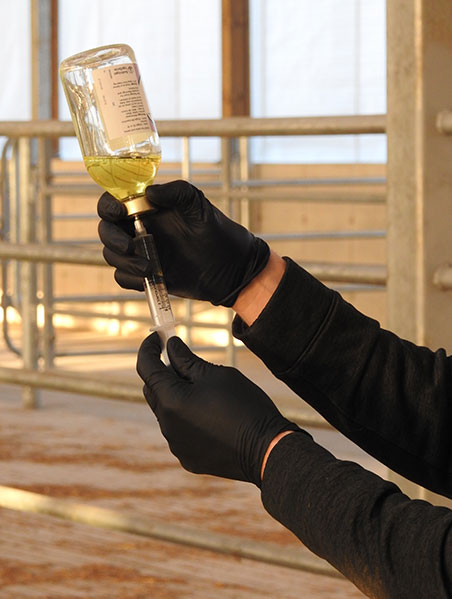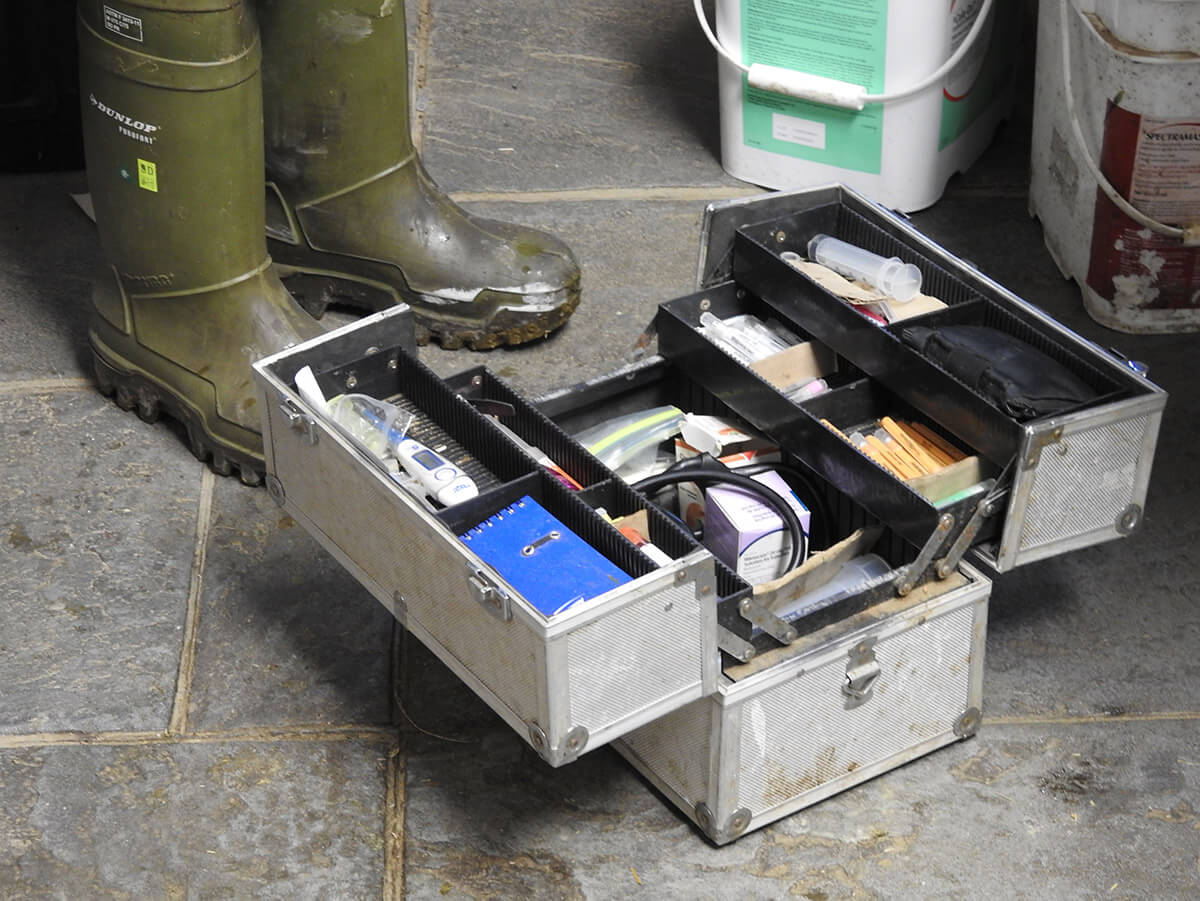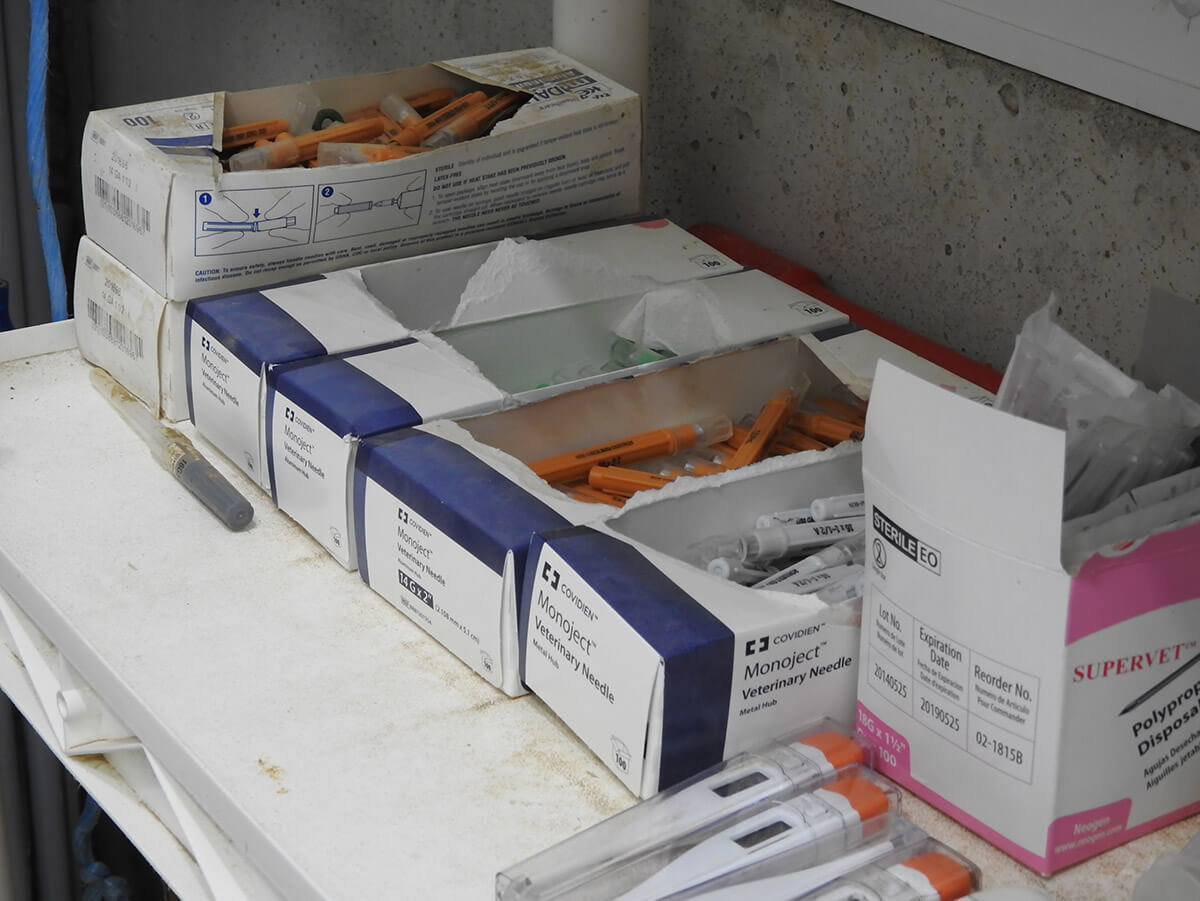Section 3 | Proper Handling, Storage, and Use of Livestock Medicines
Page 13 /
Administering Injections
Guidelines for Injections
During a food-producing animal’s lifetime, they may receive injections of vaccine to prevent disease or injectable medicines to cure illness.
)
Source: ACER Consulting Ltd.
Injection Sites
Prior to the administration of livestock medicines, it is important to ensure that the label is consulted to ensure the correct site for injection is used.
The most common injection sites are:
- Intramuscular – in the muscle
- Subcutaneous – under the skin
- Intravenous – within a vein
1. Intramuscular
Intramuscular injections are given into a muscle body where the circulating blood in the surrounding area of the injection absorbs the medicine. It is best to provide medicines in a low-value carcass area, which is on the neck in front of the shoulder for most species.

Source: Michigan Animal Health Records Manual
2. Subcutaneous
Subcutaneous injections are given in an area underneath the skin and not into the muscle tissue. A technique to find this space is to tent the skin and inserting the needle into that location, however, this is not advisable in all situations due to potential human risk.

Source: WikiHow: How to Give Cattle Injections
3. Intravenous
These injections are given directly into a vein and reduce the risk of carcass damage. However, this route should only be used by well-trained personnel, following the medicines label and cautions to minimize the risks to the animal.
Other routes include:
- Intranasal – in the nose
- Intrauterine – in the uterus
- Intramammary – in the udder
- Intraperitoneal – in the abdomen
Injection Equipment

Source: ACER Consulting Ltd.
The following equipment are recommended to administer livestock medicines:
Syringes
- Sterile disposable plastic syringes
- Single use syringes that can hold various volumes (up to 60 mL)
- Stainless steel and glass syringes
- For repeated use but require cleaning and maintenance to prevent contamination of the injection site
- Multi-dose syringes
- For administering injectable medicines to a group of animals, a multi-dose syringe could be useful to dispense the medication. Similar to the stainless steel and glass syringes, it is important to clean and maintain these syringes to prevent contamination
Needles:
- Gauge
- The gauge of the needle refers to the diameter of needles. Depending on the species of animal and the route of administration, different gauges will be used
- Length
- There are a variety of needle lengths available for the different species and routes of administration
- Examples of gauge and length by species and route of administration for adult animals:
- Bovine
- Intramuscular: 16 or 18 gauge 1½ inch needle
- Subcutaneous: 16 or 18 gauge 1 inch needle
- Intravenous: 14 gauge 2 inch needle
- Porcine
- Intramuscular: 16 or 18 gauge 1 inch needle
- Subcutaneous: 16 or 18 gauge ¾ inch needle
- Small ruminants
- Intramuscular: 18 or 20 gauge 1 inch needle
- Subcutaneous: 18 or 20 gauge ½ inch needle
- Bovine

Source: ACER Consulting Ltd.